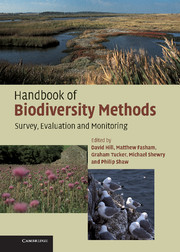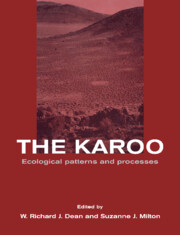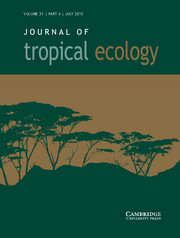Monitoring Ecological Change
2nd Edition
- Author: Ian F. Spellerberg, Lincoln University, New Zealand
- Date Published: August 2005
- availability: Available
- format: Paperback
- isbn: 9780521527286
Paperback
Other available formats:
Hardback, eBook
Looking for an inspection copy?
This title is not currently available on inspection
-
The state of ecosystems, biological communities and species are continuously changing as a result of both natural processes and the activities of humans. In order to detect and understand these changes, effective ecological monitoring programmes are required. This book offers an introduction to the topic and provides both a rationale for monitoring and a practical guide to the techniques available. Written in a nontechnical style, the book covers the relevance and growth of ecological monitoring, the organizations and programmes involved, the science of ecological monitoring and an assessment of methods in practice, including many examples from monitoring programmes around the world. Building on the success of the first edition, this edition has been fully revised and updated with two additional chapters covering the relevance of monitoring to the reporting of the state of the environment, and the growth of community based ecological monitoring.
Read more- Provides information on the theory and practice of effective ecological monitoring
- Draws on case-studies and examples of monitoring from around the world
- Written in a non-technical and informal style
Reviews & endorsements
'… excellent and well written book … the second edition of Monitoring Ecological Change is the equal of the first in accessibility, clarity and comprehensiveness. … This highly technical and often complex subject matter is rendered clear and accessible … this is a timely and useful addition to the literature. Spellerberg has managed to improve on an already impressive piece of work and I am sure it will be read, reread, and used by undergraduate and postgraduate students, practitioners, and fellow academics.' Biologist
See more reviews'I recommend this book as introductory teaching tool mainly for the undergraduate and graduate students and also for research fellows and practitioners as it offers a profound insight into the science and practice of ecological monitoring, considering different levels of biodiversity and including examples from a wide range of terrestrial and aquatic ecosystems.' Phytocoenologia
Customer reviews
Not yet reviewed
Be the first to review
Review was not posted due to profanity
×Product details
- Edition: 2nd Edition
- Date Published: August 2005
- format: Paperback
- isbn: 9780521527286
- length: 412 pages
- dimensions: 247 x 174 x 24 mm
- weight: 0.84kg
- contains: 77 b/w illus. 48 tables
- availability: Available
Table of Contents
Foreword
Preface
Acknowledgements
1. Ecological monitoring
2. Environmental monitoring programmes and organizations
3. State of the environment reporting and ecological monitoring
4. Biological scales and spatial scales in ecological monitoring
5. Biological indicators and indices
6. Diversity and similarity indices
7. Planning and designing ecological monitoring
8. Community-based ecological monitoring
9. Ecological monitoring of species and biological communities
10. Ecological monitoring and environmental impact assessments
Appendix 1. Acronyms used in the text
Appendix 2. The 1992 Convention on Biological Diversity
References
Index.
Sorry, this resource is locked
Please register or sign in to request access. If you are having problems accessing these resources please email [email protected]
Register Sign in» Proceed
You are now leaving the Cambridge University Press website. Your eBook purchase and download will be completed by our partner www.ebooks.com. Please see the permission section of the www.ebooks.com catalogue page for details of the print & copy limits on our eBooks.
Continue ×Are you sure you want to delete your account?
This cannot be undone.
Thank you for your feedback which will help us improve our service.
If you requested a response, we will make sure to get back to you shortly.
×









